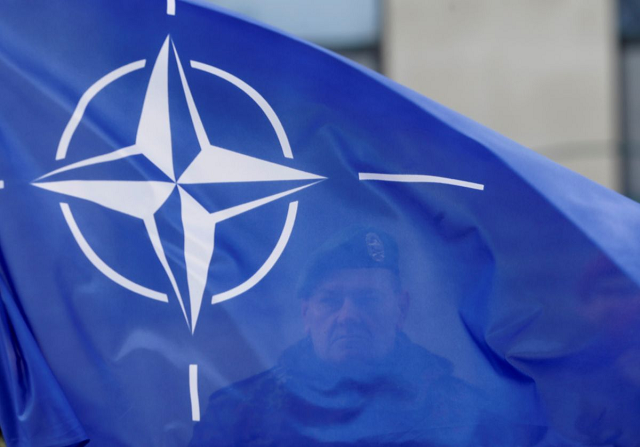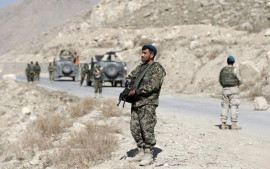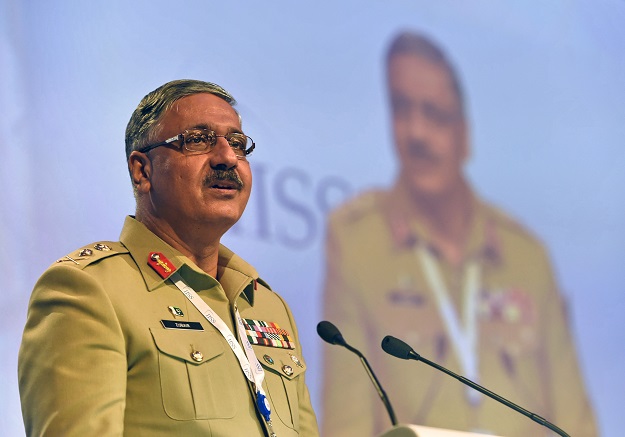
Here is some background about the Belgium-based organisation that formed at the start of the Cold War and then took on modern challenges such as terrorism:
The North Atlantic Treaty Organization was formed on April 4, 1949 by 12 countries alarmed by the Soviet Union's drive to spread communism around the world via military aggression.
They united "for collective defense", says the founding Washington Treaty signed by Belgium, Britain, Canada, Denmark, France, Iceland, Italy, Luxembourg, the Netherlands, Norway, Portugal and the United States.
The key Article 5 states that "an armed attack against one or more of them in Europe or North America shall be considered an attack against them all".
It would require other members to undertake "such action as it deems necessary, including the use of armed force".
Next to join were Greece and Turkey (1952), Germany (1955) and Spain (1982).
When the Soviet Union fell apart in 1991, the Alliance endured in the face of new challenges.
In its first combat action, NATO in 1994 sent US fighter jets to stop Serbian bombing raids into Bosnia in violation of a no-fly zone. Four Serbian planes were shot down.
In 1995, a NATO peacekeeping force deployed to Bosnia and Herzegovina in its first major crisis-response operation.
In 1999, a NATO force launched a 78-day bombing campaign against Serbia to end its bloody crackdown on its Kosovo province.
Serbian troops withdrew and Kosovo came under UN administration, with a 40,000-strong alliance force deployed to ensure security.
In 1999, the first ex-communist countries signed up to the alliance: the Czech Republic, Hungary and Poland.
NATO's "one for all and all for one" pledge was invoked for the first time after the 9/11 attacks on the United States.
It joined the US "war on terrorism" in 2003, taking the lead of the International Security Assistance Force (ISAF) deployed to Afghanistan to root out Al Qaeda and other militants.
As the European Union expanded, so did the alliance: Bulgaria, Romania, Slovakia and Slovenia joined in 2004.
The admission the same year of the three ex-Soviet states of Estonia, Latvia and Lithuania particularly annoyed Russia.
Albania and Croatia followed in 2010 and Montenegro in 2017.
NATO largely ended its combat mission in Afghanistan in 2014, leaving behind a 16,000-strong residual force for training and counter-terrorism operations.
NATO stresses Afghan commitment despite US withdrawal
In 2011, it took sole command of air strikes in Libya under a UN mandate to use "all necessary measures" to protect civilians. The seven-month campaign led to the overthrow of strongman Moamer Kadhafi.
NATO now contributes to fighting piracy off the Horn of Africa and monitoring human trafficking in the Mediterranean, while also operating a unit to defend against cyberattacks.
Although NATO and Russia established post-Cold War ties in 1997, relations remain tense, plummeting in 2014 over Moscow's role in Ukraine -- including its annexation of Crimea.
Three US soldiers killed in Afghanistan: NATO
In 2016, NATO deployed four multinational battalions to Poland and the Baltic states to guard against possible Russian adventurism.
It was the biggest reinforcement of its collective defences since the Cold War.
In late 2018, NATO carried out its broadest military exercise since the Cold War in Norway, just several hundred kilometres (miles) from the Russian border.










































COMMENTS
Comments are moderated and generally will be posted if they are on-topic and not abusive.
For more information, please see our Comments FAQ